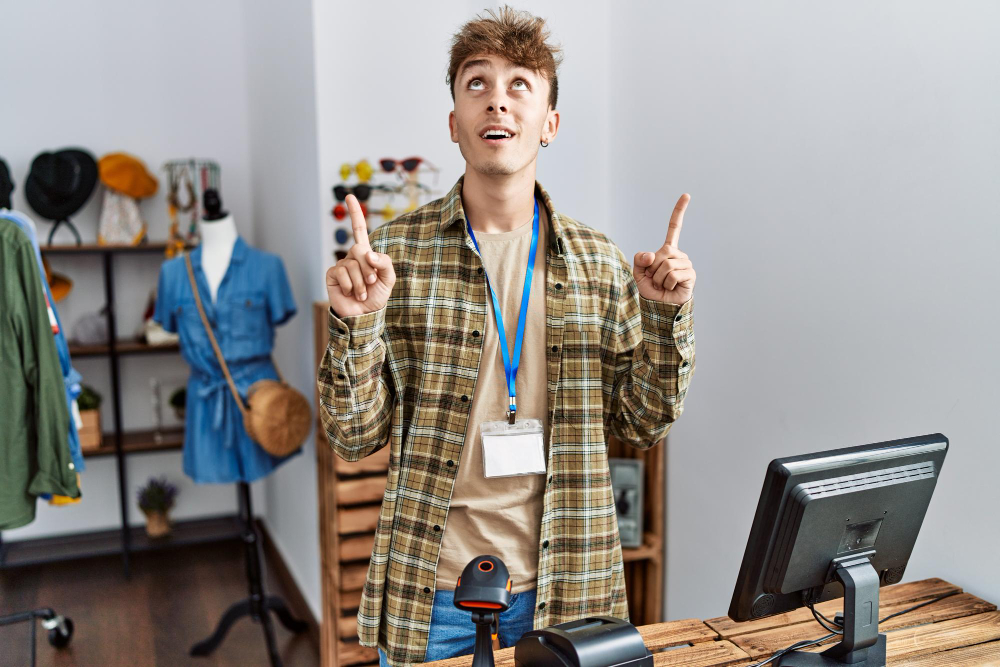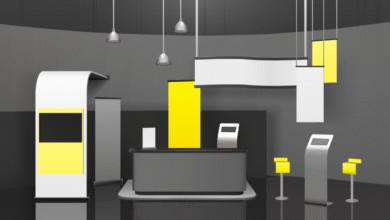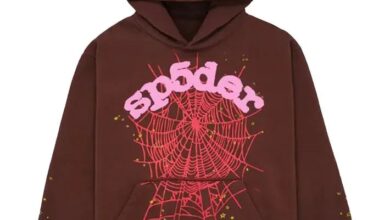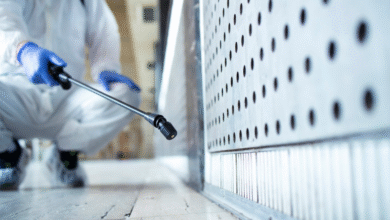Why Forward-Thinking Brands Are Ditching Generic Booths for Custom Experiences

Walk into any major trade show, and it’s easy to see which brands stand out—and which ones blend into the background. The difference isn’t just about color or size; it’s about strategy and experience. While generic booths once served as a quick fix, modern exhibitors know that a one-size-fits-all approach no longer works.
Today’s forward-thinking brands are shifting from simple setups to custom trade show booths—immersive spaces that combine design, storytelling, and technology to create experiences people remember. These booths don’t just display products; they tell a brand’s story, spark conversation, and turn visitors into loyal customers.
Why Custom Trade Show Booths Outperform Standard Displays
The Pitfalls of Using Generic Booth Rentals
Generic booths may look affordable at first, but they often lack the flexibility and branding impact companies need. With basic layouts and limited visual appeal, they fail to reflect what makes a brand unique. Visitors pass by without stopping, not because the products aren’t great—but because the presentation doesn’t inspire curiosity.
How Custom Design Reinforces Brand Identity
A custom trade show booth acts as a physical extension of your brand. Everything—from materials and lighting to color schemes and signage—reflects your identity. Customization ensures that your space aligns perfectly with your tone, values, and audience. This level of design integration helps you stand out in a sea of sameness.
Turning Visual Appeal Into Visitor Engagement
It’s not enough for a booth to look good—it has to invite participation. Custom booths can include interactive displays, product demos, or even small experiential zones that keep visitors engaged longer. The more time people spend in your space, the stronger your connection with them becomes.
Common Challenges Exhibitors Face at Trade Shows
Low Foot Traffic and Poor Visibility
One of the biggest problems exhibitors face is getting noticed. Generic booths often blend into the crowd, especially at large conventions where hundreds of companies compete for attention. Without strong design cues or strategic placement, even the best products can go unnoticed.
Lack of Storytelling or Cohesive Messaging
Many companies make the mistake of treating their booth as a simple display area. In reality, it’s a storytelling platform. Without a consistent theme or message, visitors leave without understanding who you are or why your brand matters. Custom booth design solves this by aligning visuals and messaging into one seamless experience.
Difficult Setup and Inefficient Layouts
Standard booths often come with fixed dimensions and inflexible structures that don’t fit your needs. As a result, teams waste valuable setup time adjusting to the space. Custom booths are engineered for efficiency, with modular components and optimized layouts that simplify installation while maximizing function.
How Custom Booths Solve These Problems
Strategic Design That Matches Brand Goals
Every forward-thinking brand begins with a plan. Before a single panel is built, designers evaluate business goals, target audiences, and event layouts. The result is a custom trade show display that strategically directs traffic, highlights hero products, and visually reinforces brand values.
Personalized Layouts That Guide Visitor Flow
Good booth design controls how visitors move and interact. Custom setups use open layouts, guided paths, or dedicated demo zones to encourage exploration. This flow turns random visitors into engaged prospects by helping them naturally move from curiosity to conversation.
Integrating Technology to Create Interactive Experiences
Technology is transforming trade shows into immersive environments. Touchscreens, LED walls, augmented reality (AR), and even live data visualizations allow brands to engage audiences in dynamic ways. By integrating tech directly into the booth design, brands can tell stories that are both educational and entertaining.
The ROI of Investing in a Custom Booth
Building Brand Memory That Lasts Beyond the Event
Trade shows are about visibility—but visibility means little without memorability. A well-designed booth captures emotion, not just attention. When visitors associate your brand with a powerful experience, they’re more likely to remember—and revisit—you long after the event.
Turning Engagement Into Qualified Leads
A custom booth does more than draw crowds—it builds pipelines. Interactive elements and thoughtful layouts naturally guide visitors toward conversations with your sales team. This means higher-quality leads and stronger follow-ups post-event. The booth becomes a revenue generator, not just a marketing cost.
Measuring Success With Data and Post-Event Analytics
Modern booths can incorporate tracking tools to measure engagement. Using RFID badges, heat maps, or QR interactions, brands can gather data on traffic patterns and visitor behavior. These insights help refine future booth designs and marketing strategies, leading to even better ROI.
How to Plan and Choose the Right Booth Partner
Defining Goals and Audience Before Design
Before starting a design, it’s crucial to know what you want to achieve. Are you focused on brand awareness, lead generation, or launching a product? The clearer your goals, the more targeted your booth design will be. Defining your audience also ensures that messaging and visuals resonate with the right people.
Setting Budgets and Understanding Long-Term Value
Custom booths are investments—but smart ones. Unlike rentals, custom structures are reusable and adaptable for multiple events. Over time, this reduces costs and delivers a higher return. By working with designers who understand modularity and scalable architecture, brands can expand or simplify setups as needed.
Working With Designers Who Understand Marketing Strategy
A booth isn’t just a design project—it’s a marketing tool. Collaborate with professionals who know how to blend architecture, psychology, and branding. The right partner will help you tell your story visually and strategically, ensuring every detail supports your overall marketing message.
Future Trends in Custom Trade Show Booth Design
Sustainability and Modular Reusability
Eco-conscious design is becoming a key focus in trade show marketing. Brands are opting for sustainable materials, lightweight frames, and reusable structures that minimize waste. These booths not only look good but also demonstrate environmental responsibility—a growing factor in consumer trust.
Hybrid Experiences That Blend Physical and Digital
Trade shows are no longer confined to physical walls. Hybrid booths combine live displays with digital experiences like livestreams, AR walk-throughs, and remote interactions. This approach expands audience reach while creating dynamic engagement both on-site and online.
Using AI and Real-Time Data to Personalize Booth Interactions
The future of trade shows lies in personalization. With AI-driven systems, brands can adjust booth content based on visitor profiles or interests. Imagine screens that change messaging depending on who’s nearby. These innovations turn every booth visit into a unique, tailored experience.
Conclusion
In today’s competitive event landscape, standing out takes more than showing up—it takes strategy, creativity, and connection. That’s why forward-thinking brands are moving beyond generic displays and investing in custom trade show booths.
These booths aren’t just structures; they’re experiences. They blend storytelling, design, and technology to transform ordinary spaces into unforgettable brand moments. For companies looking to make a lasting impression, custom booths are no longer a luxury—they’re a necessity. Because at the end of the day, the brands that dare to design differently are the ones that everyone remembers.



